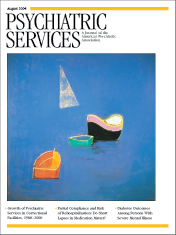The editors of Bipolar Disorder in Childhood and Early Adolescence—Barbara Geller, M.D., and Melissa P. DelBello, M.D.—are among the most renowned researchers in their field. Through contributions made by other pioneers in the field of bipolar disorder among children and adolescents, they have put together a resource that addresses some of the current research and theory regarding the epidemiology, diagnosis, course, neurobiology, genetics and treatment of this disorder.
The contributions to this book are grouped into three categories. Chapters focusing on the diagnosis and course of the disorder demonstrate the research methods and validation of some of the tools used to assist in the understanding and assessment of mania and the occurrence of bipolar disorder among children and adolescents. Material on the standardization of the assessment process is comprehensive, whereas that on how the family dynamic and function affects the presentation of the child seems to be deficient. No mention is made of the difficulty in qualifying aberrant behavior out of context, the dynamics of the family and the child, and the perspective of the examiner. In general, among the opinions reflected in this book are that mania does exist among prepubertal children, although it differs from the adolescent and adult forms, and that the diagnosis of bipolar disorder is often missed altogether or is incorrectly assumed to be one of several concurrent diagnoses. Data that support the tremendous risks and impairments facing persons affected by bipolar disorder are also shared, as well as the complications of the multitude of possible comorbid diagnosis.
The book's midsection is geared toward theory and current research on the genetics and neurobiology of mood disorders and psychosis. Chapters are devoted to the role of NMDA receptor hypofunction, neuroimaging, affective neuroscience, the immune system as related to bipolar disorder, and the relationship between circadian rhythms and mood disorders. As expected, the language is often technical and scientific. The figures, tables, and summary sections are particularly helpful in clarifying the points of some of these complex but interesting concepts.
The final chapters are perhaps the most clinically relevant, focusing on the treatment of child and adolescent bipolar disorder. The detailed descriptions of differences in the responses of children and adolescents to anticonvulsants and lithium are helpful. The fact that information about the atypical neuroleptics and antidepressants is limited is predictable but nevertheless disappointing. The obvious need for more studies is evident without being stated. The details provided for psychotherapy, family intervention, and Internet support are practical and likely to have broader clinical applications.
The contributors to Bipolar Disorder in Childhood and Early Adolescence are among those who have broken ground in researching and understanding this controversial topic. However, the book is not an easy read.
The value in this extensive summary of the study and theory of bipolar disorder among children and adolescents will be in the use of individual contributions for reference or literature review. It will be up to the reader to determine its practical application.
For this reason it seems that the best audience for this book will be those with the educational level or appropriate experience to appreciate the findings and limitations of the research presented and to understand the applications and clinical relevance.

